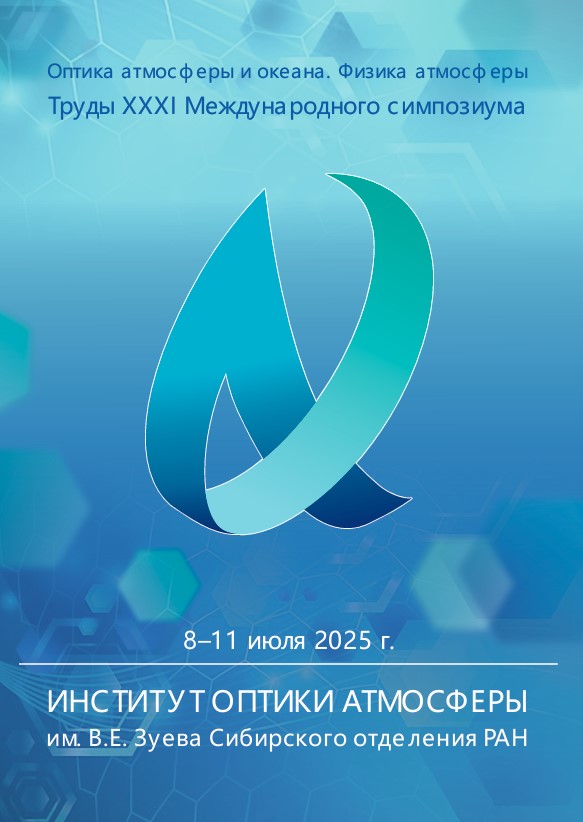UDC 535
CSCSTI 29.31
Russian Classification of Professions by Education 05.00.00
Russian Library and Bibliographic Classification 26
Russian Trade and Bibliographic Classification 63
BISAC SCI053000 Physics / Optics & Light
Based on a long series of observations of the integral coefficient of reverse aerosol scattering obtained at the Siberian Lidar Station of the IAO SB RAS in Tomsk for 2018-2025, an analysis of changes in the stratospheric aerosol layer was carried out. Trends of changes in this parameter of the atmosphere are plotted, which show a slowdown in the filling of the stratospheric aerosol. Seasonal average vertical profiles of the scattering ratio for 2023-2025 They show a decrease in values over the winter-spring period above 16 km, and summer-autumn 2023-2024, compared with the profiles of 2018-2022, slightly less or almost coincide.
remote sensing, lidar, stratospheric aerosol
1. Marichev V. N., Bochkovskiy D. A., Elizarov A. I. Opticheskie harakteristiki stratosfernogo aerozolya Zapadnoy Sibiri po rezul'tatam lidarnogo monitoringa v 2010–2021 gg. // Optika atmosfery i okeana. 2022. T. 35. № 09. S. 717–721. DOI:https://doi.org/10.15372/AOO20220904.
2. Year-round stratospheric aerosol backscatter ratios calculated from lidar measurements above northern Norway Arvid Langenbach, Gerd Baumgarten, Jens Fiedler, Franz-Josef Lübken, Christian von Savigny, and Jacob Zalach Atmos. Meas. Tech., 12, 4065–4076, https://doi.org/10.5194/amt-12-4065-2019, 2019
3. Nevzorov A.V., Dolgii S.I., Makeev A.P., Kharchenko O.V., Salnikova N.S. Stratospheric aerosol layer for period of 2018-2023 using measurements at Siberian Lidar Station in Tomsk // Proceedings of SPIE. V.12780, 29th International Symposium on Atmospheric and Ocean Optics: Atmospheric Physics, 127801V (17 October 2023); doi:https://doi.org/10.1117/12.2688302.





